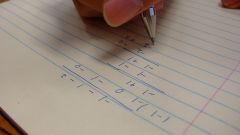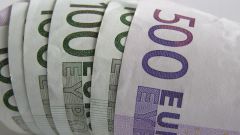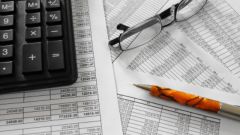Instruction
1
First and foremost, to find the proportion of any assets of the company, you need to find the sum of all assets of the enterprise. The amount of assets of the company calculated by the formula:
A = b+C+D+E+F+G, where A – the sum of all assets of the company; all the real estate of this enterprise; – the sum of the contributions of this company in Bank; D – the total number of machinery and equipment of the enterprise; E – the number of securities belonging to the enterprise; F – cash available assets of the company; G – all patents, trademarks, know-how of this enterprise.
Now, with the amount of assets we can find the proportion of any assets of the company. The assets of the company are monetary, nonmonetary, long-term, working capital, assets, etc. Next, we consider some examples of finding the proportion of the company's assets.
A = b+C+D+E+F+G, where A – the sum of all assets of the company; all the real estate of this enterprise; – the sum of the contributions of this company in Bank; D – the total number of machinery and equipment of the enterprise; E – the number of securities belonging to the enterprise; F – cash available assets of the company; G – all patents, trademarks, know-how of this enterprise.
Now, with the amount of assets we can find the proportion of any assets of the company. The assets of the company are monetary, nonmonetary, long-term, working capital, assets, etc. Next, we consider some examples of finding the proportion of the company's assets.
2
In the first example, it is necessary to consider the proportion of long-term assets of the enterprise. The proportion of long-term assets of the enterprise is according to the formula:
(H+J+I)/(A/100), where A - the sum of all assets of the company, H – fixed assets of the enterprise, J – financial investments of the enterprise for the long term, I – intangible assets of the enterprise.
(H+J+I)/(A/100), where A - the sum of all assets of the company, H – fixed assets of the enterprise, J – financial investments of the enterprise for the long term, I – intangible assets of the enterprise.
3
In the second example discusses the specific weight of circulating assets of the enterprise. The proportion of current assets is calculated according to the formula:
(L+M+N)/(A/100), where L is the amount of accounts receivable of enterprises, M – the sum of all financial investments of the enterprise for a short time, N – the cash and reserves of the company.
(L+M+N)/(A/100), where L is the amount of accounts receivable of enterprises, M – the sum of all financial investments of the enterprise for a short time, N – the cash and reserves of the company.
4
The third example shows the calculation of the specific weight of Bank assets. The share of Bank assets can be found by the formula:
(O+P+E+B+S)/(A/100), where O – the cash balance of the enterprise; P – the loan taken by the enterprise; E – the number of securities belonging to the enterprise; all the real estate of the enterprise; S – other objects of ownership of the enterprise of value.
(O+P+E+B+S)/(A/100), where O – the cash balance of the enterprise; P – the loan taken by the enterprise; E – the number of securities belonging to the enterprise; all the real estate of the enterprise; S – other objects of ownership of the enterprise of value.
Note
How to find specific gravity?Specific gravity is one of the basic characteristics of matter, showing what weight is the unit volume of the substance. specific gravity is sometimes called the density of matter. Specific weight is expressed in grams per cubic centimeter or in kilograms per cubic meter.
Useful advice
The concept of density is widely used in physics. For example, using a known density, you can easily find the mass of the substance. To do this, just use the formula m=Vd. One unit of density accepted density of substance which mass equal to one if unit volume. The proportion is calculated according to the formula y=P/V. the Ratio of the specific weight and density in proportion to the ratio of weight and body mass.





